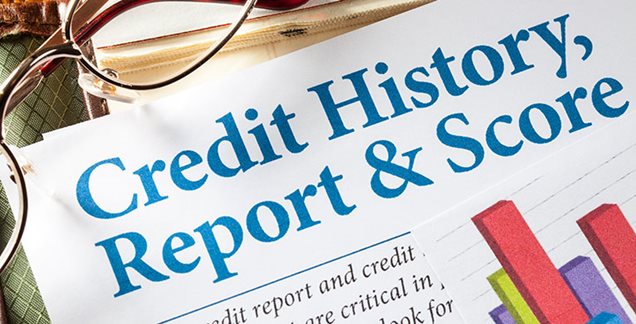Your credit history and credit score are important parts of your financial health. That’s because your credit history can be viewed by banks, credit card companies and even future employers.
Sounds pretty important, right? The good news is, similar to physical health, you can improve your credit health once you know the steps to take.
First, let’s talk about credit reports.
Your credit score starts with your credit report. There are three major credit reporting bureaus, Experian, Equifax, and TransUnion. Each keeps track of your credit activities, such as when you open a new credit card and if you pay your bills on time or not. Each bureau keeps their own records separately, so you’ll often see small variations between them.
A great first step is to order a free copy of your reports from AnnualCreditReport.com. This will help you become familiar with the types of entries on your report. It also allows you to look for any errors. Even better, each bureau will point out the entries that might be hurting your credit health so that you can start to address them.
What is a credit score?
A credit score is a three-digit number that reflects how likely you are to repay debt. Scores range from 300 to 850. Higher scores generally lead to more favorable loan terms and can reduce the cost of borrowing.
People often ask, “Can I have a credit score of zero?” Not exactly, but you can have no credit score. You will only have a credit score if you have credit activity reported to at least one major credit reporting bureau. So, if you’ve never applied for credit, it’s unlikely you will have a credit score.
What makes up my credit score?
You may be wondering how the entries on your credit report become a number. Two main credit scoring agencies, FICO® and VantageScore®, are used in the U.S. to convert the data from your report into a credit score. While these agencies don’t share the exact formula they use to calculate your score, we do know the factors they consider. These activities appear to have the greatest influence on scores, in order of importance:
- Payment history – Do you pay your bills on time? Do you always pay at least the minimum amount? Payment history generally accounts for about 35% of your credit score, so it’s very important. Even one late payment can have a negative impact, so always try to pay your bills on time and pay at least the minimum amount. Also, if you are behind on payments, reach out to your creditors to see what you can do to avoid your account being marked with a “collection” status. While making your full payment is ideal, you may be able to avoid collection status by making partial payments at least. Open communication with your creditors is key. Accounts in collection status can have a significant impact on your score.
- Amount owed / amount of available credit – One factor here is simply the total amount you owe your lenders (car loans, credit cards and utility bills, to name a few). The second part is the percentage of available credit you’re using. Using less of your available credit can equal a higher credit score. For example, if you owe $900 and have a $1,000 credit limit, you’re using 90% of your available credit. Your score can be positively impacted if you were using $500 of $1,000 available instead, for example. This factor makes up about 30% of your credit score.
- Length of credit history / age of credit accounts – Longer is better on this one. Someone who has been using credit for five years is considered a lower risk than someone who’s been using credit for five weeks, when all other factors are equal. This accounts for about 15% of your score.
- Opening of new credit accounts – This one is tricky. You might think opening new accounts is a good thing because you need credit history. It is true that you need some credit to help build your credit history. However, your credit score will drop a bit every time you apply for credit and the lender runs a check against your report. That’s because people who apply for a lot of credit at once are seen as a credit risk. You can expect this factor to account for about 10% of your score.
- Variety of credit accounts / credit mix – This is the last 10% of your credit score. People with a mix of credit types, like credit cards, an auto loan, and a mortgage, seem to have a slightly higher score than those with only one type of credit.
With a few simple steps, you can begin to better understand your score and improve your credit health.

